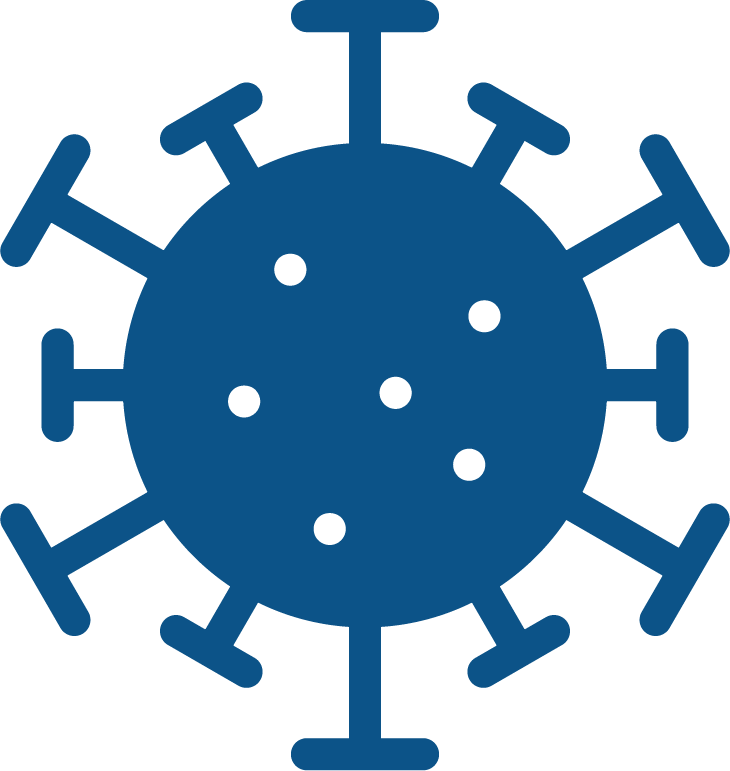 Testing....
Testing....
Cord blood stem cells have a unique and powerful ability to regenerate cells that have been damaged by disease or medical conditions.
Umbilical cord blood stem cell transplants have been performed for more than 30 years to treat a wide range of diseases including blood disorders, cancers, metabolic disorders, and immunological disorders.
The FDA had approved cord blood treatments for more than 80 diseases and medical conditions today, and many more potential therapies in clinical trials have been initiated for conditions such as autism, cerebral palsy, age-related cognitive decline, adult stroke, and immune disorders such as Crohn’s Disease, to name a few.1,2
In fact, there have been 45,000 cord blood transplants worldwide, and there are more than 3,500 clinical trials initiated exploring the use of cord blood stem cells for new therapies.2,3
Banking your baby’s cord blood provides you with life-giving stem cells and offers peace of mind knowing that you can access your baby’s preserved stem cells at any time.
Every 4 minutes, one person is diagnosed with a blood cancer
Every 10 minutes, someone dies from a blood cancer
80+ diseases are FDA approved for routine treatment with cord blood stem cells
1 in 3 people may benefit from stem cell regenerative medicine therapy 13
Cord blood transplants are approved by the FDA to treat a wide range of cancers, blood disorders, metabolic disorders and immunological disorders.

Blood Disorders
Acute Myelofibrosis
Agnogenic Myeloid Metaplasia (Myelofibrosis)
Amyloidosis
Aplastic Anemia (Severe)
Beta Thalassemia Major
Blackfan-Diamond Anemia
Congenital Amegakaryocytic Thrombocytopenia (CAT)
Congenital Cytopenia
Congenital Dyserythropoietic Anemia
Dyskeratosis Congenita
Essential Thrombocythemia
Fanconi Anemia
Glanzmann’s Thrombasthenia
Myelodysplastic Syndrome
Paroxysmal Nocturnal Hemoglobinuria (PNH)
Polycythemia Vera
Pure Red Cell Aplasia
Refractory Anemia with Excess Blasts (RAEB)
Refractory Anemia with Excess Blasts in Transition (RAEB-T)
Refractory Anemia with Ringed Sideroblasts (RARS)
Shwachman-Diamond Syndrome
Sickle Cell Disease

Cancers
Acute Biphenotypic Leukemia
Acute Lymphocytic Leukemia (ALL)
Acute Myelogenous Leukemia (AML)
Acute Undifferentiated Leukemia
Adult T Cell Leukemia/Lymphoma
Chronic Active Epstein Barr
Chronic Lymphocytic Leukemia (CLL)
Chronic Myelogenous Leukemia (CML)
Chronic Myelomonocytic Leukemia (CMML)
Ewing Sarcoma
Hodgkin’s Lymphoma
Juvenile Chronic Myelogenous Leukemia (JCML)
Juvenile Myelomonocytic Leukemia (JMML)
Myeloid/Natural Killer (NK) Cell PrecursorAcute Leukemia
Non-Hodgkin’s Lymphoma
Prolymphocytic Leukemia
Plasma Cell Leukemia
Leukocyte Adhesion Deficiency
Multiple Myeloma
Neuroblastoma
Rhabdomyosarcoma
Thymoma (Thymic Carcinoma)
Waldenstrom’s Macroglobulinemia
Wilms Tumor

Immune Disorders
Adenosine Deaminase Deficiency (SCID)
Bare Lymphocyte Syndrome (SCID)
Chediak-Higashi Syndrome (SCID)
Chronic Granulomatous Disease
Congenital Neutropenia
DiGeorge Syndrome
Evans Syndrome
Fucosidosis
Hemophagocytic Lymphohistiocytosis (HLH)
Hemophagocytosis Langerhans’ Cell Histiocytosis (Histiocytosis X)
IKK Gamma Deficiency (NEMO Deficiency)
Immune Dysregulation, Polyendocrinopathy, Enteropathy, X-linked (IPEX) Syndrome
Kostmann Syndrome (SCID)
Myelokathexis
Omenn Syndrome (SCID)
Phosphorylase Deficiency (SCID)
Purine Nucleoside (SCID)
Reticular Dysgenesis (SCID)
Severe Combined Immunodeficiency Diseases (SCID)
Thymic Dysplasia
Wiskott-Aldrich Syndrome
X-linked Agammaglobulinemia
X-Linked Hyper IgM Syndrome
X-Linked Lymphoproliferative Disorder

Metabolic Disorders
Congenital Erythropoietic Porphyria (Gunther Disease)
Gaucher Disease
Hunter Syndrome (MPS-II)
Hurler Syndrome (MPS-IH)
Krabbe Disease
Lesch-Nyhan Syndrome
Mannosidosis
Maroteaux-Lamy Syndrome (MPS-VI)
Metachromatic Leukodystrophy
Mucolipidosis II (I-cell Disease)
Neuronal Ceroid Lipofuscinosis (Batten Disease)
Niemann-Pick Disease
Sandhoff Disease
Sanfilippo Syndrome (MPS-III)
Scheie Syndrome (MPS-IS)
Sly Syndrome (MPS-VII)
Tay Sachs
Wolman Disease
X-Linked Adrenoleukodystrophy
Recent research has taken umbilical cord blood stem cells into the realm of adoptive cellular therapy. New technologies have been developed to help cord blood stem cells expand and speed their homing and recovery in the body, leading to shorter hospitalization and better outcomes.4 More than 3,500 clinical trials have been initiated using cord blood stem cells.2 The following are just a few:1,5
One challenge with any stem cell transplant is keeping the patient from rejecting the transplanted cells. This can happen due to a mismatch in HLA-type, a protein found in these cells that helps ward off invaders.
Because cord blood stem cells are immunologically naive, meaning they have had little-to-no exposure to diseases and environmental toxins, they are less likely to be rejected by the patient than adult sources of stem cells.
Also, they don’t have to be as closely matched as stem cells taken from other sources, such as bone marrow.
Availability is another key consideration. Even if a bone marrow donor can be found in a public registry, they still need to be located, and a surgery scheduled to extract the bone marrow from the chest or hip — a painful procedure that can add months of waiting that a patient may not have.
Studies have also indicated a reduced risk of disease relapse when using umbilical cord blood stem cells.5
Cord tissue contains mesenchymal stem cells (MSCs), which are a different kind of stem cell than the hematopoietic stem cells (HSCs) in cord blood. MSCs have potent anti-inflammatory and immune-modulation properties, as well as the ability to differentiate and proliferate into many different types of tissue, including bone, cartilage, fat, muscle, organ tissue, and connective tissue.
A great deal of research has been done studying the potential of these cells to renew and repair, with some 55,000 articles published.6 There more than 2,300 clinical studies initiated, and nearly 10,000 patients have received treatments in these clinical trials.7,8
MSCs are at the frontier of regenerative medicine because they are able to migrate to injured sites (including the brain) and promote tissue regeneration. Clinical studies are assessing their use to treat multiple sclerosis, Alzheimer’s, Parkinson’s Disease, ALS, liver disease, spinal cord injury, chronic wound healing, rheumatoid arthritis, cardiac ischemia, diabetes, and even lung damage from Covid-19.1,9
Yes, in some cases, depending on the disease or condition being treated.
Stem cell transplants are classified as autologous (the patient uses healthy stem cells from their own body) or allogeneic (the patient uses stem cells from a matched donor, such as a sibling).
If a child has an inherited blood disorder it cannot use its own stem cells because the stem cells would carry the same defect. A healthy sibling could potentially save that child though an allogeneic transplant if the siblings are sufficiently HLA-matched.
In fact, the first successful umbilical cord blood stem cell transplant performed in 1988 was between a 6-year-old boy who would have died from Fanconi anemia, and his baby sister, who was conceived through IVF to ensure she did not inherit the disorder. Both are alive and well today.
While allogeneic stem cell transplants are used when an inherited disorder is the cause of a blood cancer or disease, autologous transplants may be performed to treat other diseases.
Autologous stem cell transplants are also used for patients who need to undergo high doses of radiation or chemotherapy that are likely to damage their bone marrow. The patient’s healthy stem cells are then transfused back to them to help their immune system recover and rebuild.
Autologous stem cell transplants are used to treat the following diseases:1,10,11
If you’re considering donating your baby’s cord blood stem cells, public cord blood banks have the option to sell your donated sample to a research facility or to discard your sample. In fact, 80% of all publicly donated cord blood samples are not stored for future transplantation.12
It is unlikely you would have access to your own cord blood stem cells if donated to a public bank, and if they were available, the cost to procure stem cells from a public bank is approximately $50,000. This cost may or may not be covered by insurance, or subject to an insurance deductible that exceeds the cost of lifetime private storage.
Public banks also lack ethnic diversity, which has a major role in HLA-matching. If you are not 100% Caucasian, have a family history of heritable disorders, do not know your family history because of adoption, or simply want to know that your stem cells will be available to you should you need them, you should use a private cord blood bank.
Quality, experience, and affordability. We lead the industry with the most advanced and comprehensive cord blood and cord tissue stem cell banking services. MiracleCord has been processing and storing cord blood for nearly 20 years, and we were awarded Best U.S. Cord Blood Bank by Global Health & Pharma, an independent ratings organization, for four years running for our cutting-edge technology, exceptional service, and affordability.
To learn more about how cord blood and cord tissue banking may be used in the future to protect your family, talk to one of our experts at 888.743.2673.
Note: Some diseases may be known by other names. The use of umbilical cord blood stem cells to treat many diseases and conditions is typically considered standard therapy, while the treatment for other conditions may still be in a clinical trial phase.
1. Parent's Guide to Cord Blood Foundation. Retrieved February 10, 2025. Diseases that can be Treated with Cord Blood. https://parentsguidecordblood.org/en/diseases
2. ClinicalTrials.gov. Retrieved February 10, 2025. https://clinicaltrials.gov/search?term=cord%20blood
3. National Library of Medicine: National Center for Biotechnology Information. Retrieved February 10, 2025. Cord blood 2.0: state of the art and future directions in transplant medicine. https://pmc.ncbi.nlm.nih.gov/articles/PMC6439299/
4. National Library of Medicine: National Center for Biotechnology Information. Retrieved February 10, 2025. Umbilical Cord Blood Transplants: Current Status and Evolving Therapies. https://pmc.ncbi.nlm.nih.gov/articles/PMC7567024/
5. National Library of Medicine: National Center for Biotechnology Information. Retrieved February 10, 2025. Umbilical cord blood: The promise and the uncertainty. https://pmc.ncbi.nlm.nih.gov/articles/PMC7519764/
6. Nature.com. npj Regenerative Medicine. Retrieved February 10, 2025. Mesenchymal stem cell perspective: cell biology to clinical progress. https://www.nature.com/articles/s41536-019-0083-6
7. ClinicalTrials.gov. Retrieved February 10, 2025. https://clinicaltrials.gov/search?term=cord%20tissue
8. Frontiers in Bioengineering and Biotechnology. Retrieved February 10, 2025. Therapeutic Potential of Mesenchymal Stem Cells for Cancer Therapy. https://www.frontiersin.org/journals/bioengineering-and-biotechnology/articles/10.3389/fbioe.2020.00043/full
9. Frontiers in Bioengineering and Biotechnology. Retrieved February 10, 2025. Can Stem Cells Beat COVID-19: Advancing Stem Cells and Extracellular Vesicles Toward Mainstream Medicine for Lung Injuries Associated With SARS-CoV-2 Infections. https://www.frontiersin.org/journals/bioengineering-and-biotechnology/articles/10.3389/fbioe.2020.00554/full
10. Memorial Sloan Kettering Cancer Center. Retrieved February 10, 2025. Diseases Treated with Stem Cell Transplants. https://www.mskcc.org/cancer-care/diagnosis-treatment/cancer-treatments/blood-bone-marrow-stem-cell-transplants/transplantation-process/diseases-treated
11. Mayo Clinic. Retrieved February 10, 2025. Autologous stem cell transplant. https://www.mayoclinic.org/tests-procedures/autologous-stem-cell-transplant/pyc-20384859
12. Parent's Guide to Cord Blood Foundation. Retrieved February 10, 2025. Cord Blood Infographic. https://parentsguidecordblood.org/en/cord-blood-infographic
13. Harris DT. Cord blood stem cells: a review of potential neurological applications. Stem Cell Rev. 2008;4:269-274. Epub August 5, 2008.
14. Parent's Guide to Cord Blood Foundation. Retrieved April 16, 2025. Cord Blood Proven Effective for Cerebral Palsy. https://parentsguidecordblood.org/en/news/cord-blood-proven-effective-cerebral-palsy